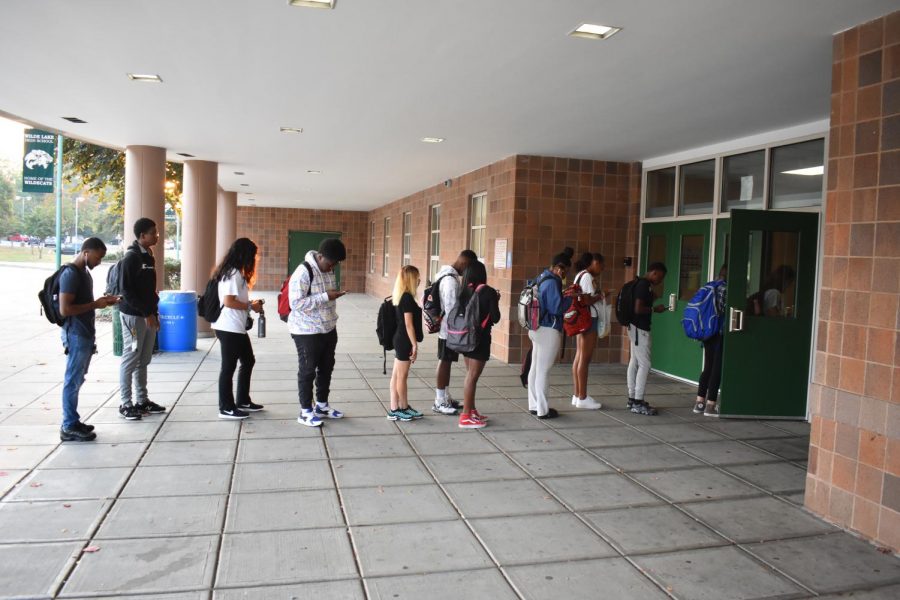Lateness Policy Creates Long Lines and Delays Instruction For Late Students
At 7:25am across Howard County, students are expected to be in school on time. However, this isn’t always the case for Wilde Lake seniors Selam Abebe, Bryan Shin, and Trea Jenkins. The trio often misses the 7:10-7:25am timeframe, after which time students stand in line and await an official tardy pass.
Although differing circumstances land these students in the line, they all end up missing up to half of the instructional time in their first period classes. “The tardy line is so long that even when I come to school one minute late I’ll end up being twenty to thirty minutes late to class,” says Shin, who often finds himself missing the school bus.
Jenkins has expressed his disapproval as well. He often has to travel from his father’s house in Washington D.C. to school, which contributed to his 50 tardies last year. Jenkins commented that the tardy line has caused him to, “…miss essential instructions with the assignments done during the first period.”
In response to student lateness, new Wilde Lake Principal Ms. Leonard has re-enforced a strict lateness policy, which she had previously used during her tenure as principal at both Atholton and Hammond High Schools. It increases the consequences each time a student is marked late without an excuse note. If a student is late one to two times they are given a warning. However, if the student is late three to seven times, they will receive lunch detention, a phone call home, an after school detention, and then an office referral.
“There is research that shows school attendance is directly linked to student performance,” says Ms. Leonard, “So when students miss school, they don’t do as well, and when they don’t do as well, there’s an increased probability of them failing classes, having a lower GPA, and even dropping out. It’s a slippery slope that I want to prevent.”
Although the main goal of the policy is to encourage students to get to school on time, Ms. Leonard has also found that it helps her identify patterns with students who may be suffering from more than initially meets the eye. “Once we find those students who are continuously struggling to get to school on time we’re able to get down to the root causes and we can work with these students to provide resources which will ultimately help them get to school on time,” she says.
At some schools, tardy students go directly to class where teachers issue tardy discipline. So despite Ms. Leonard’s good intentions, senior Selam Abebe views the policy as unfair. “I think the policy is too harsh, and should look towards giving more warnings first before immediate lunch detentions and office referrals,” she says.
Though agreeing with student’s opinions that more lines should be created in order to reduce the time wasted, Ms. Leonard stresses that as long as a student is able to provide an excuse note, there will be no consequences. She reassures students and staff members that the administrative team is doing the best they can to improve the late line, and reduce the number of tardies of students who are repeatedly late.
Your donation will support the student journalists of Wilde Lake High School. Your contribution will allow us to purchase equipment and cover our annual website hosting costs.






